Choosing a jazz guitar amp can be a tedious process. After all, what exactly defines a contemporary jazz guitar sound? Are you more interested in a strong, traditional clean sound? Or does some modern technological wizardry hold more appeal? Do you use effects pedals or appreciate a gently built-in reverb?
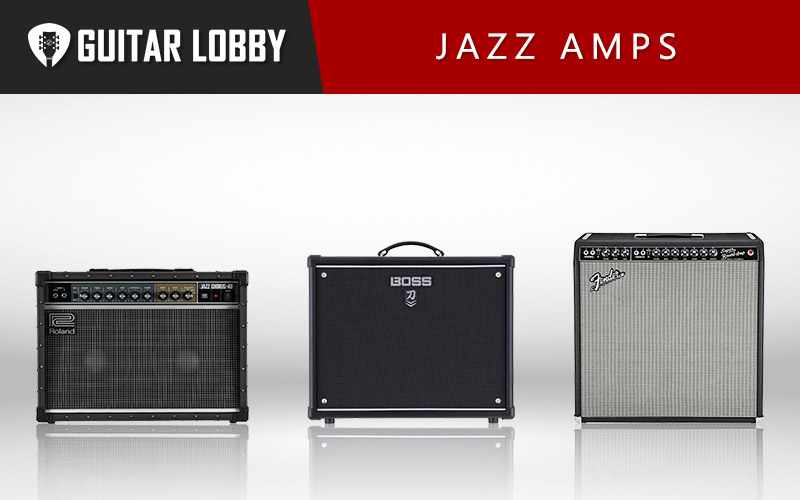
Do you gig frequently and need to transport an amplifier? Or are you looking for something more geared towards studio, rehearsal, or teaching settings? I’ll start this article by reviewing the best jazz amps at each price point, but if you want to learn more about them before reading reviews, check out our jazz guitar amp buying guide at the bottom of the page here.
| Name of Product | Image of Product | Description | Price Range | Full Review |
|---|---|---|---|---|
| 1. Roland JC-40 Jazz Chorus (Best Overall) | 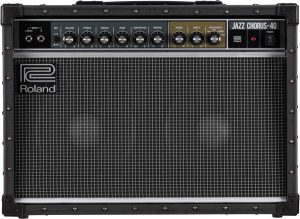 | Combo or Stack: Combo Speakers: 2 x 10” | $600 | Read Full Review Below |
| 2. Fender Hot Rod Deluxe (Best Value) | 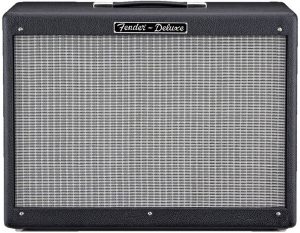 | Combo or Stack: Combo Speakers: 1 x 12” | $300 | Read Full Review Below |
| 3. Peavey Classic 30 112 Editor's Choice) | 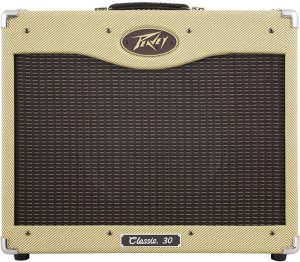 | Combo or Stack: Combo Speakers: 1 x 12” | $700 | Read Full Review Below |
| 4. ZT Amplifiers Lunchbox Junior (Best Miniature Amp) | 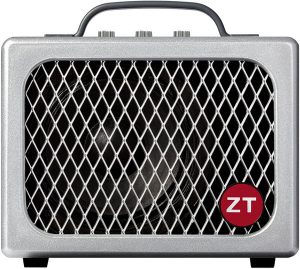 | Combo or Stack: Combo Speakers: 1 x 5” | $200 | Read Full Review Below |
| 5. Boss Katana MKII-100 (Best Modeling Amp) | 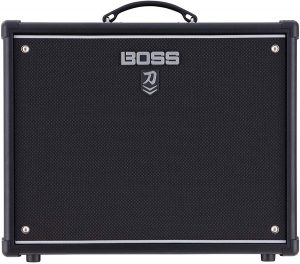 | Combo or Stack: Combo Speakers: 1 x 12” | $360 | Read Full Review Below |
| 6. Fender ’65 Super Reverb (Best Amp for Large Venue) | 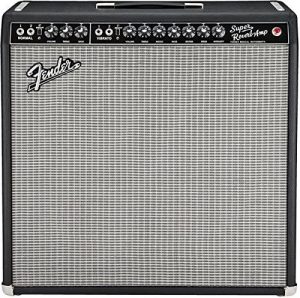 | Combo or Stack: Combo Speakers: 4 x 10” | $1550 | Read Full Review Below |
| 7. Orange Amps Crush 35RT | 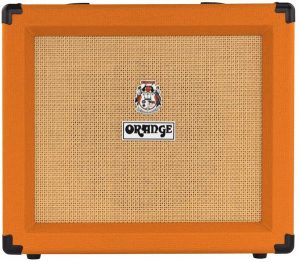 | Combo or Stack: Combo Speakers: 1 x 10” | $270 | Read Full Review Below |
| 8. VOX AC15C1 | 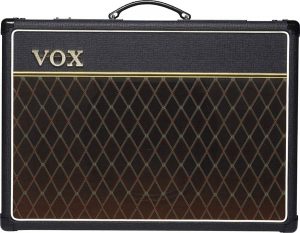 | Combo or Stack: Combo Speakers: 1 x 10” | $700 | Read Full Review Below |
| 9. Fender ’57 Custom Champ | 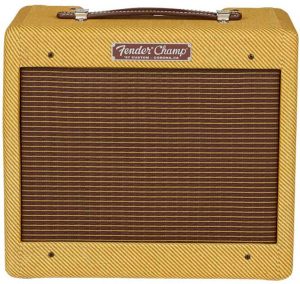 | Combo or Stack: Combo Speakers: 1 x 8” | $998 | Read Full Review Below |
| 10. Line 6 AMPLIFi 75 Modeling Guitar Amplifier | 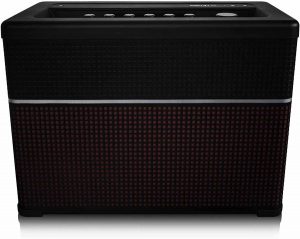 | Combo or Stack: Combo Speakers: 1 x 8” | $300 | Read Full Review Below |
| 11. Roland AC-60 Acoustic Chorus Guitar Amplifier | 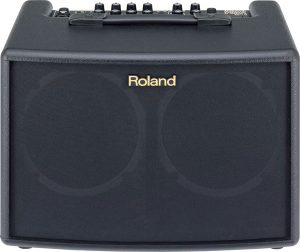 | Combo or Stack: Combo Speakers: 2 x 6.5” | $499 | Read Full Review Below |
| 12. Blackstar HT Club 40 1×12 MKII | 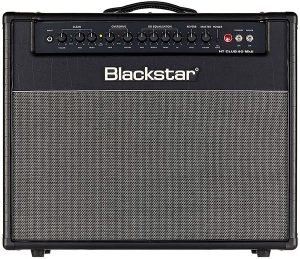 | Combo or Stack: Combo Speakers: 1 x 12” | $800 | Read Full Review Below |
Here Are the Best Jazz Guitar Amps
1. Roland JC-40 Jazz Chorus Amp (Best Overall)
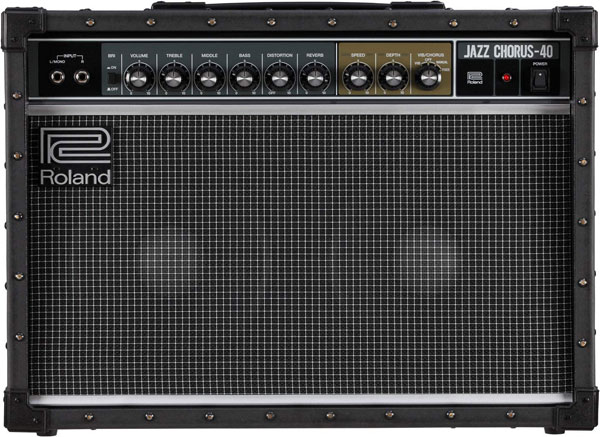
| Estimated Price | $600 |
| Combo or Stack | Combo |
| Speakers | 2 x 10” |
| Wattage | 40 watts |
| Onboard Effects | Yes |
My Review: The Roland JC Jazz Chorus line of amplifiers first debuted in 1975 and quickly redefined the landscape for clean electric guitar tones. The JC series is a popular choice among jazz guitarists for its reliability, stereo inputs, and ability to blend well with effects pedals. The Roland JC-40 is a smaller edition of the original JC-120 and is a great addition to the JC line of amplifiers.
The Roland JC-40 is a solid-state combo amplifier. This means that the amplifier does not rely on vacuum tubes at any point in its circuitry and that the amplifier’s circuit board and speakers are housed together in one enclosure, as opposed to a stack alignment where the circuit board and speakers are housed separately. The JC-40 features two, 10” speakers providing 40 watts of power.
The Roland JC-40 is prized for its onboard effects capabilities. In 1975, chorus was a brand new effect only available in a select number of stompbox pedals. Roland totally innovated the amplifier world by manufacturing a chorus effect unit inside of the original JC-120. This decision was wildly successful and the Jazz Chorus series is one of the most popular amps for jazz guitarists to this day.
Overall, the Roland JC-40 is a great choice for a jazz guitarist interested in a powerful solid-state clean tone. The stereo inputs allow room for stereo effects with pedals and the built-in chorus is wonderful. The JC-40 is also smaller than the original JC-120s, which is beneficial for transport! The Roland JC-400 is truly a “buy once cry once” type of purchase.
2. Fender Hot Rod Deluxe (Best Value)
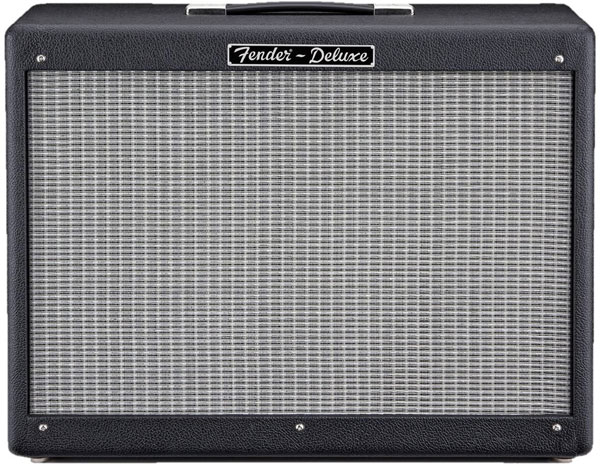
| Estimated Price | $900 |
| Combo or Stack | Combo |
| Speakers | 1 x 12” |
| Wattage | 80 watts |
| Onboard Effects | Yes |
My Review: The Fender Hot Rod Deluxe is a newer addition to Fender’s line of great amplifiers and is one of Fender’s most popular and best selling amps today. It is a solid and dependable amp for the jazz guitarist and neatly captures all the tonal characteristics Fender amps have been prized for.
The Fender Hot Rod Deluxe is a combo amp and features a single 12” Celestion Type-A speaker that pumps out 40 watts of power. This amplifier is more than enough to fill a small to medium size venue with some sound reinforcement and perfect for recording and rehearsing. I find that I have rarely had to turn one of these amps up past 3 or 4 on the channel volume and rarely past 2 on the master volume. They really crank out the volume.
The Fender Hot Rod Deluxe features three 12AX7 preamp tubes, two 6L6 power tubes, and a solid-state rectifier for clear, touch sensitive response. The Hot Rod Deluxe also features three channel modes, normal, drive, and more drive, a three band equalizer, and built-in spring reverb.
Overall, the Fender Hot Rod Deluxe is a perfect choice for jazz guitarists. The Fender Hot Rod Deluxe pumps out enough volume for medium sized rooms with headroom to spare, takes effect pedals well, and is light and portable enough to not break your back when you haul it from car to stage! Overall I would say that this is the best jazz amp for the money.
3. Peavey Classic 30 112 Guitar Combo Amp (Editor’s Choice)
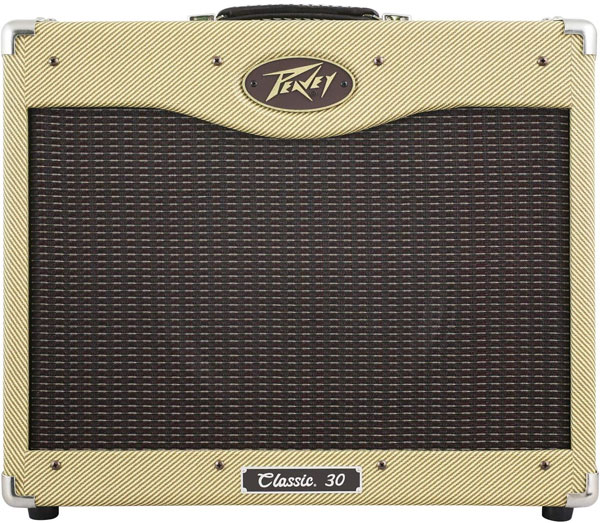
| Estimated Price | $700 |
| Combo or Stack | Combo |
| Speakers | 1 x 12” |
| Wattage | 30 watts |
| Onboard Effects | Yes |
My Review: Colloquially known as the poor man’s Twin, the Peavey Classic 30 has been revered by tone maestros for decades. Peavey has been manufacturing high quality amplifiers from their Meridian, Mississippi factory for 55 years. At an affordable price point, the Peavey Classic 30 packs all the big, beautiful clean tones you could ever want.
The Peavey Classic 30 is a combo amp that features a single, 12” Celestion Midnight 60 Speaker that kicks out 30 watts of power. The Classic 30 relies on three 12AX7 preamp tubes and four EL84 power tubes. This combination of tubes is what gives the Peavey Classic 30 its iconic tone and power. The Peavey Classic 30 features pre and post gain controls and a single channel with a single, ¼” input jack.
The Peavey Classic’s single channel features a three band equalizer for bass, middle, and treble control as well as a boost switch for situations where you need that extra little push. To top it off, the Peavey Classic features a genuine spring reverb box with an added footswitch.
Overall, the Peavey Classic 30 is a stellar choice for the jazz guitarist looking for a quality amp that can hit all the bases without breaking the bank. I own a Peavey Classic 50, which is a slightly larger, 2×12 version of this amp, and I can certainly say that it is the best amp I have ever owned and has been my trusted friend and ally through many performance and recording situations.
4. ZT Amplifiers Lunchbox Junior (Best Miniature Amp)

| Estimated Price | $200 |
| Combo or Stack | Combo |
| Speakers | 1 x 5” |
| Wattage | 35 watts |
| Onboard Effects | None |
My Review: The ZT Amplifiers Lunchbox Junior is a newcomer to the guitar amplifier world. ZT Amplifiers began building amps in 2008 and debuted the Lunchbox Junior in 2012. Since then, the amp has been adopted by such reputable guitarists as Nels Cline, Julian Lage, and Jeff Tweedy. The Lunchbox Junior is poised to redefine what a smaller amp can achieve.
No doubt about it, the Lunchbox Junior is a tiny amp. A small combo, the Lunchbox Junior weighs in at only five pounds, is about eight inches tall, and features only one, five-inch speaker. However, don’t let its diminutive stature fool you into thinking this amp can’t kick it out. The Lunchbox Junior is a surprisingly powerful little beast, pumping out 35 watts of solid-state thunder.
The Lunchbox Junior features three control knobs on the top panel, volume, gain, and tone for controlling output, distortion, and treble or bass balance. The back panel features an ⅛” output jack for headphone practice and a 12 volt DC input which means the Lunchbox can be powered by an aftermarket battery pack or even a car cigarette lighter jack. The back panel also includes a 9v DC output so you can use the Lunchbox to power your effects pedals on the go without needing any external power.
Overall, the ZT Lunchbox Junior is a standout choice for a newer micro amp. The combination of portability, accessibility, and solid construction makes for an amp perfect for the guitarist on the go, for quiet practice time at home, or for a smaller venue where a larger combo is not required.
5. Boss Katana MKII-100 (Best Modeling Amp)
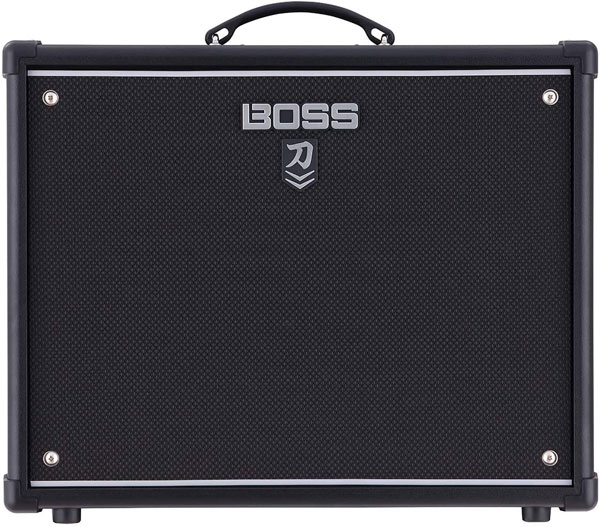
| Estimated Price | $360 |
| Combo or Stack | Combo |
| Speakers | 1 x 12” |
| Wattage | 100 watts |
| Onboard Effects | Yes |
My Review: The Boss Katana MKII-100 is a modern work of technological amplification wizardry. Boss has been the name of the game for standard pedal and effects technology for close to four decades and the Katana series is a perfect demonstration of the knowledge Boss has acquired over that time. The Katana MKII is a stellar presentation of seemingly endless moldable tonal possibilities.
The Katana MKII is a combo amplifier with one, 12” speaker pushing out 100 watts of power with a variable power option for quieter moments. This is more than enough for almost every performance situation the semi-professional guitarist will encounter. Like other Boss amplifiers, the Katana relies on solid-state circuitry and incorporates Boss’s Tube Logic design approach for increased power and character.
The Katana MKII’s attraction lies in its modeling capabilities. The Katana MKII features five modeled amp variations including clean, crunch, lead, brown, acoustic, and five independent effects sections including booster, mod, FX, delay, and reverb. It also features three modeled cabinet options including vintage, modern, and deep. Additionally, the Katana can be coupled with Boss’s Tone Studio software for further tonal options.
Overall, the Katana MKII-100 is a powerful choice for the jazz guitarist needing to cover a wide range of tonal spaces. If you are interested in accessing Boss’s quality amp, effects, and cabinet models and want to expand your sound using software editing, then the Katana MKII is right up your alley. If your main goal is just to find a traditional, clean tone jazz guitar amp, then the Katana MKII is not for you.
6. Fender ’65 Super Reverb (Best Amp for Large Venue)
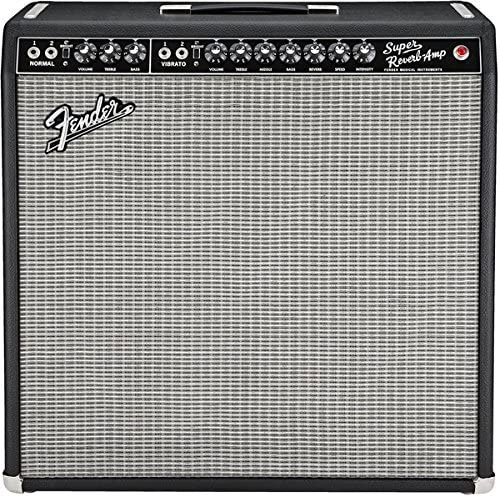
| Estimated Price | $1550 |
| Combo or Stack | Combo |
| Speakers | 4 x 10” |
| Wattage | 45 watts |
| Onboard Effects | Yes |
My Review: The Fender ‘65 Super Reverb is something of a staple in the world of jazz guitar amps. Fender’s classic clean tone is unparalleled and the reissue models of Fender amps are solid machines. The Fender ‘65 Super Reverb is modeled after the original Fender Blackface Super Reverb manufactured from 1963-1968. Original Fender Blackface Super Reverb amplifiers are highly sought after models.
The Fender ‘65 Super Reverb is a combo amplifier that features four, 10” Jensen P10R speakers housed in a birch plywood cabinet with black tolex covering. The ‘65 Super Reverb is a tube amplifier and relies on a combination of four 12AX7 and two 12AT7 preamp tubes and two 6L6 and one 5AR4 Rectifier tubes. This combination pushes out 45 watts of pure clean Fender tone with plenty of headroom.
The Fender ‘65 Super Reverb features two input channels. The first channel has a two band equalizer for bass and treble and the second channel has a three band equalizer for bass, mid-range, and treble. The first channel is dry while the second channel includes both a tube-driven spring reverb and tremolo. The reverb is controlled via a knob on the right side of the faceplate and the tremolo is controlled via two knobs, intensity and speed.
Overall, the Fender ‘65 Super Reverb is a great choice if you are looking for a clean and loud amplifier. The Fender ‘65 Super Reverb has been a classic choice for jazz guitarists because of its consistency, reliability, and traditionally balanced and clear clean tone. The Super Reverb’s strong clean tone also makes the amp a great choice if you like to include some effect pedals in your jazz guitar tone.
7. Orange Amps Crush 35RT
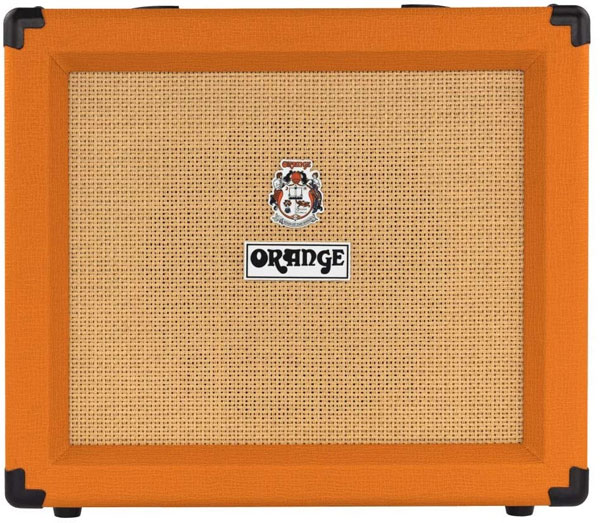
| Estimated Price | $270 |
| Combo or Stack | Combo |
| Speakers | 1 x 10” |
| Wattage | 35 watts |
| Onboard Effects | Yes |
My Review: The Orange Crush 35RT is a sweet little monster. While more frequently favored by metal and rock guitarists, Orange amps produce a wonderfully powerful clean tone that can be used quite effectively by a jazz guitarist. The Crush line debuted in 2000 and has developed a strong niche in the smaller amp market.
The Orange Crush 35RT is a combo amp and features a single, 10” speaker pushing out 35 watts of power. Contrast this with the ZT Lunchbox Junior for comparison in the miniature amp realm. Like the other amps listed so far on this list, the Orange Crush 35RT features solid-state circuitry. While some other, larger Orange amplifiers use tubes, the Orange Crush does not. But don’t fret, the Orange Crush 35RT’s analog circuitry produces a lively and responsive feel that will keep your attention and fuel your inspiration.
The Orange Crush 35RT includes a three band equalizer for bass, treble, and mid-range frequencies. The 35RT also includes a built-in chromatic tuner and digital reverb module designed to emulate a classic spring reverb chamber. Finally, the Orange Crush 35RT comes equipped with a low impedance effects loop so you can run all your favorite effects without sacrificing tone on the guitar’s input.
Overall, the Orange Crush 35RT is a winner for the jazz guitarist looking for an affordable, smaller amplifier for recording, rehearsing, and quieter gigs. The Orange Crush has a great clean sound and can get down and dirty if you need it and the built-in effects loop makes it a great choice for sonic wizards. This is easily one of the best jazz guitar amps out there, period.
8. VOX AC15C1
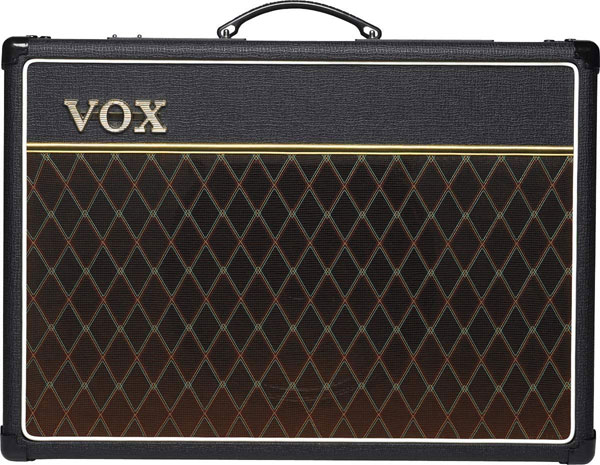
| Estimated Price | $700 |
| Combo or Stack | Combo |
| Speakers | 1 x 10” |
| Wattage | 15 watts |
| Onboard Effects | Yes |
My Review: Vox amplifiers are some of the most heavily recorded amplifiers in history. Players across the musical spectrum from the Edge and Brian May to John Scofield have chosen Vox, particularly the AC series, as their amplifier of choice for its sparkle and chimney clean tones and it makes an attractive choice for the discerning jazz guitarist.
The Vox AC15 is a combo amp and features a single, 10” Celestion Greenback speaker. The Greenback is known for its mellower mid-range response. The AC15 is a little 15 watt tube-powered growler that gets the job done when you need it. The AC15 features three 12AX7 preamp tubes and two EL84 power amp tubes. The EL84 tubes are part of what defines the “British” amplifier sounds as compared to the 6L6 power amp tubes favored by American brands like Fender.
The Vox AC15C1 features two channels, a normal channel and a top boost channel controlled via individual channel volumes and individual master volumes. The normal channel does not allow for EQ, but the top boost channel routes a two band EQ for treble and bass. The AC15 also comes equipped with built-in tremolo and reverb for that vintage appeal you are looking for.
Overall, the Vox AC15C1 is a solid pick if you want to get into the legendary AC amplifier series. It is a great choice for a jazz guitarist for its mellower clean tone. After all, if the master John Scofield uses one, you can’t go wrong, right?
9. Fender ’57 Custom Champ
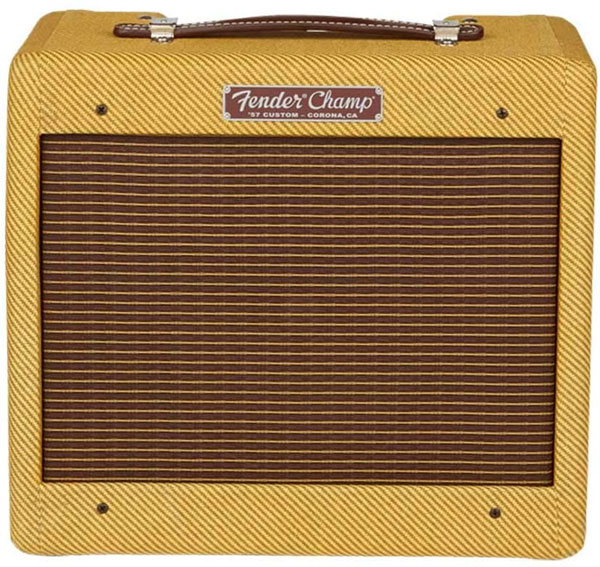
| Estimated Price | $998 |
| Combo or Stack | Combo |
| Speakers | 1 x 8” |
| Wattage | 5 watts |
| Onboard Effects | None |
My Review: Another iconic choice from Fender, the ‘57 Custom Champ is a reissue of one of the most sought after vintage amplifiers, the 1950s Fender Champ. Like the ‘65 Super Reverb reissues, Fender has done an excellent job of maintaining a high degree of quality in its reissue series, which is great news for all of us jazz guitarists out there who want a great sounding amp at a great sounding budget!
The Fender ‘57 Custom Champ is a miniature combo amp that blasts 5 watts of pure tube tone through a single 8” Weber Special Design speaker. The beauty of this amp’s circuit lies in its simplicity. Because of its low wattage, the Fender ‘57 Champ can be cranked up without breaking up and delivers impressive sustain and tone and a high degree of touch sensitivity. The ‘57 Champ includes one 12AY7 preamp tube, one 6V6 Power tube, and one 5Y3GT Rectifier tube.
The Fender ‘57 Custom Champ includes two ¼” instrument inputs on one channel and a master volume control knob. There is no built-in equalizer, reverb, tremolo, or any other effects. This is about as basic an amplifier as you can get and that is the foundation of its lasting appeal.
Overall, if you are looking for a perfect clean tone for your jazz guitar explorations, then the Fender ‘57 Custom Champ may be just the right choice for you. If you don’t want any built-in effects, equalization, or any other additions, then this amp will be your best friend.
10. Line 6 AMPLIFi 75 Modeling Guitar Amplifier
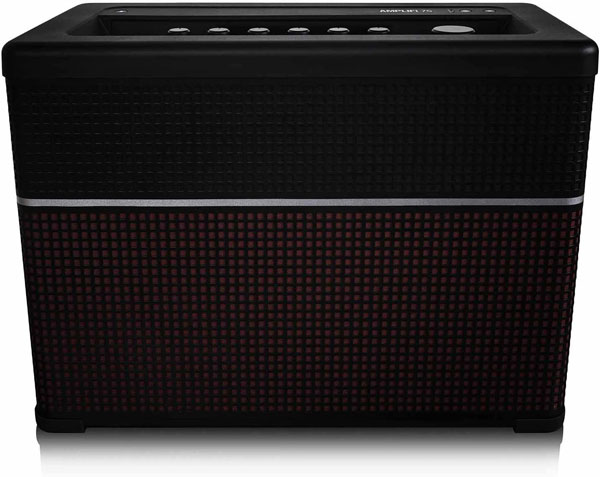
| Estimated Price | $300 |
| Combo or Stack | Combo |
| Speakers | 1 x 8” |
| Wattage | 75 watts |
| Onboard Effects | Yes |
My Review: In the world of modeling amplifier technology, Line 6 has been innovating the game for decades. Their early effects models, especially their famous green delay, revolutionized what was possible with technology, and their Helix multi-effects unit has completely changed the landscape for multi-effects pedals. Now, the Line 6 has incorporated their award-winning modeling technology into an amplifier: the AMPLIFi.
The AMPLIFi is a combo amplifier with a single 8” speaker that puts out 75 watts of power. In addition to the single speaker, the AMPLIFi includes two high frequency drivers and two mid-range frequency drivers to handle the intricacies of the modeled sounds. The AMPLIFi relies on solid-state circuitry instead of tubes.
The main attraction of the AMPLIFi 75 is its modeling capabilities. The AMPLIFi allows you to choose between 200 different amps, cabinets, pedals, and effects processors and create endless chains of combinations for an unparalleled tonal extravaganza. The AMPLIFi comes ready to rock with a paired remote app for Android, iOS, Mac, and PC. You can use the paired AMPLIFi app to dial in your perfect tone with the intuitive controls and wirelessly control your sound from anywhere in the house! Amazing! The AMPLIFi also comes prepared with Bluetooth wireless speaker technology so you can play all your favorite tunes through the amp and also jam along with backing tracks or other recordings!
Overall, the AMPLIFi 75 Modeling Guitar Amplifier is a solid choice for the jazz guitarist interested in expanding the tonal repertoire of the instrument. The wide array of modeled amps, cabinets, and effects makes for an attractive choice for the creative jazz guitarist and the built-in Bluetooth speaker makes for an excellent teaching aid for private lessons.
11. Roland AC-60 Acoustic Chorus Guitar Amplifier
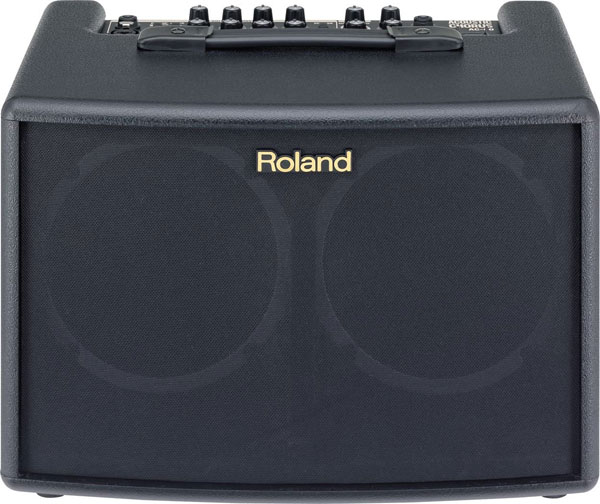
| Estimated Price | $499 |
| Combo or Stack | Combo |
| Speakers | 2 x 6.5” |
| Wattage | 30 watts |
| Onboard Effects | Yes |
My Review: The Roland AC-60 Acoustic Chorus is a new adaptation of Roland’s famous JC Jazz Chorus line of amps. Perfectly suited for acoustic guitars, the Roland AC-60 would also work splendidly for a hollow body archtop guitar to produce clear and crisp acoustically accurate tones.
The Roland AC-60 Acoustic Chorus features two, 6.5” speakers that dish out a solid 30 watts of power. This innovative amp uses sophisticated digital signal processing to deliver a crisp sound and a wide stereo sound. The Roland DSP is a solid-state system, so this amp does not have any tubes. The AC-60 features two channels, a ¼” instrument jack for guitar and an XLR input for microphones, making the AC-60 a great companion for gigs with vocalists. The guitar channel includes a switch to toggle between piezo and magnetic guitar inputs.
The AC-60 includes a three band equalizer on both channels for bass, mid-range, and treble frequencies as well as a push button for chorus controlled by a level knob. The AC-60 also includes an innovative anti-feedback component that helps eliminate possible feedback from acoustic or hollow body guitar at louder volumes.
Overall, the Roland AC-60 Acoustic Chorus is a perfect choice for a more traditional jazz guitarist. The AC-60 is a simple, straight forward amplifier that would pair well with a nice, D’Angelico or Sadowsky hollow body for an authentic and traditional clean, jazz guitar sound.
12. Blackstar HT Club 40 1×12 MKII
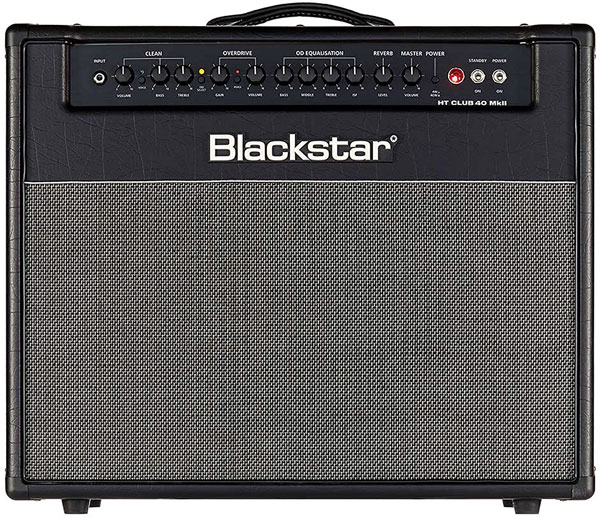
| Estimated Price | $800 |
| Combo or Stack | Combo |
| Speakers | 1 x 12” |
| Wattage | 40 watts |
| Onboard Effects | Yes |
My Review: Blackstar is a relatively new brand on the guitar amplifier market. Based in North Hampton, England, Blackstar has been making quality amps of varying arrangements and styles since 2007. The Blackstar HT Club 100 is a powerful amp for live, rehearsal, and recording situations.
The Blackstar HT Club 100 is a combo amp that features one, 12” Celestion Seventy 80 speaker and pushes out 40 watts of power. The HT Club 100 features two 12AX7 preamp tubes and two EL34 power amp tubes for that classic British tone. Compare these features to the Vox AC15. The Blackstar HT Club has two foot-switchable channels, a clean channel that delivers sparkly highs and clear and tight lows, and an overdrive channel that delivers everything from warm crunch to distorted fusion madness.
The Blackstar’s two channels include a three band equalizer on the overdrive channel and a two band equalizer on the clean channel. The HT Club 100 also includes a Dark/Light reverb switch and level control. Finally, the HT Club includes a variable power switch which toggles the amp between 40 and 4 watts for quieter practicing situations.
Overall, the Blackstar HT Club 100 is an awesome choice for the gigging jazz guitarist. The Blackstar HT Club 100 is comparable in size and power to the Fender Hot Rod Deluxe. Both amps pack enough punch to fill a large room with sound reinforcement and are perfect for recording, rehearsing, and practicing. Both amps feature great, tube-powered clean tones with plenty of headroom and dirt if you want it.
Choosing the Right Jazz Guitar Amp (Buying Guide)
This section is for those of you who want to learn more about jazz guitar amps before reading reviews.
The Size and Whether it’s Combo or Stack Arrangement
It is important to consider the size and arrangement of your jazz guitar amp before purchasing it. What will be your primary uses for this amplifier? Will you be performing frequently and traveling often to gigs? Will you primarily be recording? Or will you be rehearsing at a set location and possibly using it for lessons and other teaching arrangements? All of these factors should play a role in your decision.
All of the amplifiers on this list are combo amplifiers. A combo amplifier is an amplifier that contains the amp’s circuitry and speakers inside of one enclosure. In a stack arrangement, the amp’s circuitry and speakers are housed separately. Generally, the amp’s circuitry is housed in a smaller enclosure and stacked on top of the amplifier speakers, which are generally housed in a larger enclosure, hence the term stack.
If you will be performing frequently and traveling to gigs, it makes the most sense to have the smallest possible amplifier. That way, you won’t break your back or arms carrying the amp to the stage. There are many miniature combo amps on this list including the ZT Lunchbox Junior, the Fender ‘57 Custom Champ, the Vox AC15C1, and the Orange Crush 35RT. You could carry one of these amps with you on the bus or the subway to your gig along with your guitar and be totally comfortable.
If a miniature amp is just not your style, then your best bet is probably a 1 x 12” setup. The best choices for 1 x 12” setups on this list are the Boss Katana MKII, Fender Hot Rod Deluxe, Blackstar HT Club 40, or Peavey Classic 30. These amps are slightly heavier than the miniature amps, but pack more of a weighty punch in a mid-sized room than any of the miniature amps.
If your main purposes are for recording, then your best choice might be the Fender ‘57 Custom Champ or the Roland JC-40. These amps are renowned for the classic tones and suitability for recording situations.
If you are mainly rehearsing in a set location, then the Fender ‘65 Super Reverb might be a suitable choice since it is the heaviest and loudest amp on the list and is loud enough to cover any size ensemble. Additionally, the Fender Hot Rod Deluxe would be another great choice if you are mainly using the amplifier for rehearsal.
If your main use for the amplifier is in music lessons, then the Line 6 AMPLIFi might be the best choice for you because of its built-in modeling capabilities, its Bluetooth connectivity, and high-quality speaker system. All of these features are beneficial teaching aides. The Boss Katana MKII would fit into this category as well for its extensive modeling technology. It can be fun and inspiring for guitarists to dive into an amp like the Katana or AMPLIFi that offers seemingly endless possibilities for effects, amps, and cabinets.
Solid State Versus Tube Circuitry
It is important to consider whether or not you want solid state or tube circuitry in your jazz guitar amp. Jazz guitarists go both ways in this realm and there are a number of solid state and tube amplifiers covered on this list.
On a technical level, solid state amplifiers rely on electronics to amplify the guitar’s signal, while tube amplifiers rely on vacuum tubes to amplify the guitar. There is endless debate among guitarists as to which is the better choice. The traditionalists have one choice and the innovators prefer another. Who is right? The choice is yours to make.
On this list, the Roland JC-40, ZT Lunchbox Junior, Boss Katana MKII, Orange Crush 35 RT, and Roland AC-60 Acoustic Chorus are all solid state amplifiers. As you can see, these amplifiers represent a diverse cross section of tones. The Roland JC-40 and AC-60 are perfect for traditional clean tone jazz guitarists. The ZT Lunchbox is a great mini amp with a strong and loud clean tone. The Boss Katana MKII is a technological marvel with huge modeling capabilities. This is the advantage of solid state technology versus tube technology. Tube amps generally have one sound that can be overdriven to produce a second drive channel. On the other hand, solid state amps can be manipulated to produce almost any tone the creator desires. However, which is better? The real thing, or the simulation of the real thing? The debate continues.
The tube amplifiers on this list include the Fender ‘65 Super Reverb, Vox AC15C1, Fender ‘57 Custom Champ, Fender Hot Rod Deluxe, Blackstar HT Club 40, and Peavey Classic 30. These amps all push out great clean tones with plenty of headroom for overdriven tube growl if you want it. Tube amps are often preferred for their responsive and bouncy tones. These amps can be distinguished further by the number and type of preamp and power tubes. The American made Fender amps generally favor the 6L6 power tubes while the Vox and Blackstar amps generally favor the EL34 and EL84 for that traditional British tone. I recommend again listening to your favorite guitarist to see which amps they play and then seeking them out to try for yourself before buying. The most important difference to me between a tube amp and a solid state amp is the way the notes feel when played. A tube amp often feels more responsive and alive while a solid state amp generally feels more squished and squashed like a potato masher.
Built-in Effects
It is also important to consider the importance of built-in effects when purchasing a jazz guitar amp. The role of the jazz guitarist is wide and constantly shifting. From round and powerful clean tones to wildly modulated or distorted improvisations, the contemporary jazz guitarist must be able to successfully tread through many realms seamlessly and simultaneously.
The amps on this list cover a lot of territory as well. Some of these amps do not have any built-in effects and rely solely on the integrity of their clean tone. Amps in this category include the ZT Lunchbox Junior, the Roland AC-60 Acoustic Chorus, and the Fender ‘57 Custom Champ do not include any built-in effects but are all celebrated for their incredible clean tones.
Some amps on this list only feature basic effects like chorus, reverb, or tremolo. Amps in this category include the Roland JC-60 Jazz Chorus, the Fender ‘65 Super Reverb, the Fender Hot Rod Deluxe, the Blackstar HT Club 40, and the Peavey Classic 30. If you prefer to run your own effects pedals either in front of the amp or through an effects loop, then perhaps an amp with a high quality built-in reverb is all you need. Fender and Peavey reverbs in particular are prized for the lush characters.
Still other amps on this list are major innovators in digital modeling technology and contain more effects than one could probably ever hope to use. Amplifiers in this category include the Boss Katana MKII and Line 6 AMPLIFi 75. Both of these amplifiers build on the successes of Boss and Line 6’s effect pedal lines. One disadvantage to this type of amplifier is that you are stuck with all these effects. Do you like all these Boss effects? Do you like all these Line 6 effects? Do you want to get lost forever in a computer making arrangements of digital buttons on a screen or do you want to play guitar? On the other hand, you can literally save yourself hundreds of dollars by buying an amplifier with all of these built-in effects.
Speakers
Finally, it is important to consider the nature and configuration of the speakers when purchasing a jazz guitar amp. The size of the speaker does not always predict the power of the amp. For example, the ZT Lunchbox Junior has a single 5” speaker, but packs enough power to supply Julian Lage and Nels Cline on their duo guitar tour. On the other hand, the Fender ‘65 Super Reverb is stacked full with four, 10” speakers that push out so much sound you probably won’t ever need to set the master volume past 4.
Of course, each speaker has its own characteristics. Like all things guitar, each component of the amp has its own unique imprint on the sonic sum. Celestion speakers sound different from Weber speakers which sound different from Jenson speakers.
Listen to your favorite jazz guitarists and try to identify what amplifiers they are using. Find interviews on YouTube or elsewhere on the internet where they discuss their gear choices. You can learn alot about the specifics of each of these speakers by researching what your influences are using.
Conclusion:
The realm of jazz guitar is a wide open and ever shifting territory. The history of jazz guitar amps is equally expansive as the styles and timbres of the music have shifted. From powerful and pure clean tone beasts like the Fender ‘65 Super Reverb and Hot Rod Deluxe to solid-state classics like the Roland JC-40 and AC-60 to modern marvels of sonic wonder like the Boss Katana MKII and Line 6 AMPLIFi, there are so many great choices out there to satisfy the creative interests of all jazz guitarists, from the most traditional to the most eclectic and otherworldly.

My name is Chris and I’ve had a passion for music and guitars for as long as I can remember. I started this website with some of my friends who are musicians, music teachers, gear heads, and music enthusiasts so we could provide high-quality guitar and music-related content.
I’ve been playing guitar since I was 13 years old and am an avid collector. Amps, pedals, guitars, bass, drums, microphones, studio, and recording gear, I love it all.
I was born and raised in Western Pennsylvania. My background is in Electrical Engineering, earning a Bachelor’s degree from Youngstown State University. With my engineering experience, I’ve developed as a designer of guitar amplifiers and effects. A true passion of mine, I’ve designed, built, and repaired a wide range of guitar amps and electronics. Here at the Guitar Lobby, our aim is to share our passion for Music and gear with the rest of the music community.

Your final line about the Katana: “ If your main goal is just to find a traditional, clean tone jazz guitar amp, then the Katana MKII is not for you.” While that is true to a degree, the fact is that when dialed in correctly the Katana produces sound that competes very well with such renowned ‘jazz’ amps as Henriksen, Quilter, DV Mark, and even Polytone. Oh, and its ‘clean’ amp type is modeled on the Fender Twin Reverb.
I would suggest to anyone purchasing a new (or used) amp and seeking light weight, good jazz sound and great versatility that they try a Katana. The MkII 50 watt combo can be had under $300 new and under $200 in great pre-owned condition.